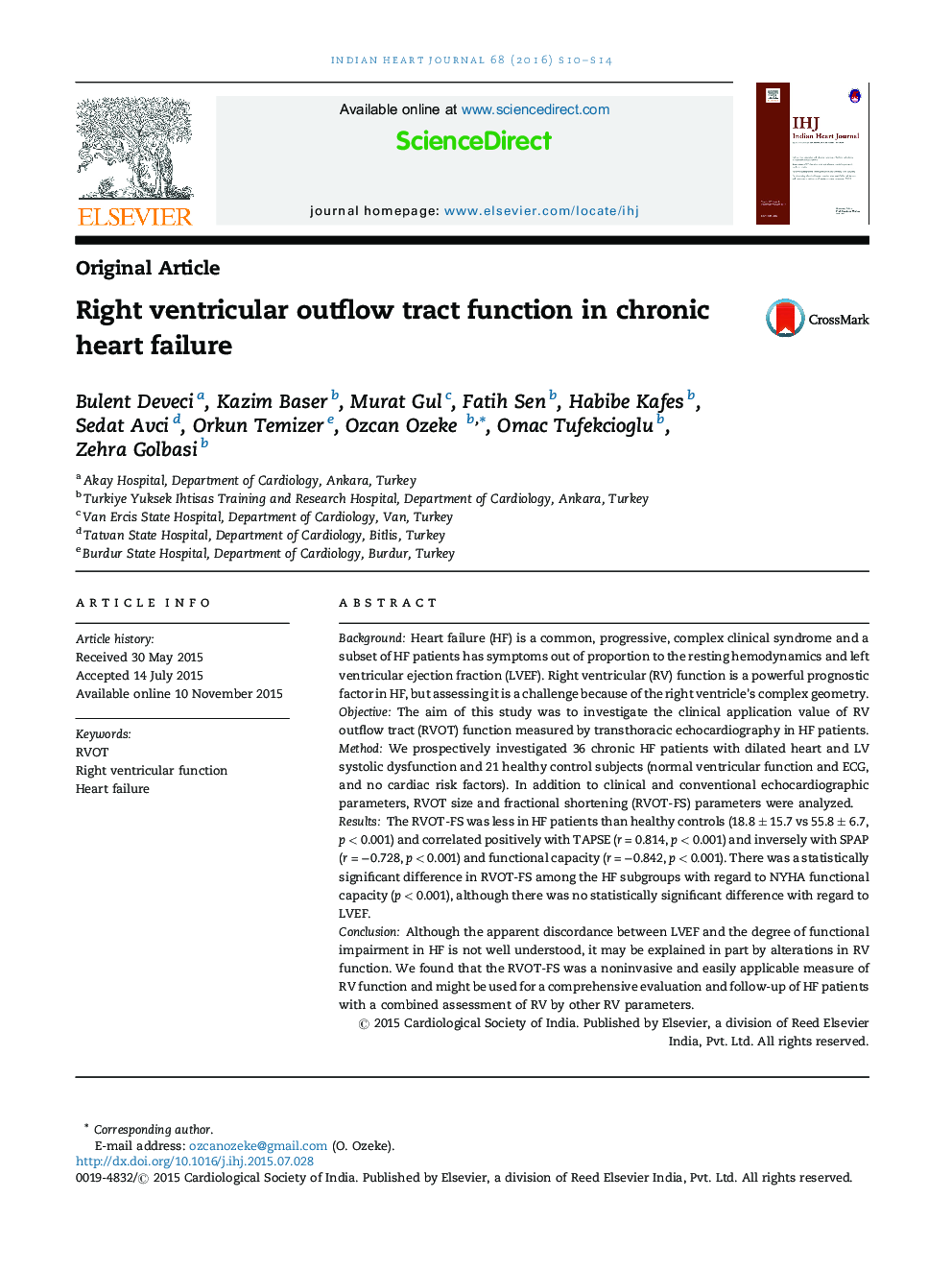| Article ID | Journal | Published Year | Pages | File Type |
|---|---|---|---|---|
| 2927589 | Indian Heart Journal | 2016 | 5 Pages |
BackgroundHeart failure (HF) is a common, progressive, complex clinical syndrome and a subset of HF patients has symptoms out of proportion to the resting hemodynamics and left ventricular ejection fraction (LVEF). Right ventricular (RV) function is a powerful prognostic factor in HF, but assessing it is a challenge because of the right ventricle's complex geometry.ObjectiveThe aim of this study was to investigate the clinical application value of RV outflow tract (RVOT) function measured by transthoracic echocardiography in HF patients.MethodWe prospectively investigated 36 chronic HF patients with dilated heart and LV systolic dysfunction and 21 healthy control subjects (normal ventricular function and ECG, and no cardiac risk factors). In addition to clinical and conventional echocardiographic parameters, RVOT size and fractional shortening (RVOT-FS) parameters were analyzed.ResultsThe RVOT-FS was less in HF patients than healthy controls (18.8 ± 15.7 vs 55.8 ± 6.7, p < 0.001) and correlated positively with TAPSE (r = 0.814, p < 0.001) and inversely with SPAP (r = −0.728, p < 0.001) and functional capacity (r = −0.842, p < 0.001). There was a statistically significant difference in RVOT-FS among the HF subgroups with regard to NYHA functional capacity (p < 0.001), although there was no statistically significant difference with regard to LVEF.ConclusionAlthough the apparent discordance between LVEF and the degree of functional impairment in HF is not well understood, it may be explained in part by alterations in RV function. We found that the RVOT-FS was a noninvasive and easily applicable measure of RV function and might be used for a comprehensive evaluation and follow-up of HF patients with a combined assessment of RV by other RV parameters.
